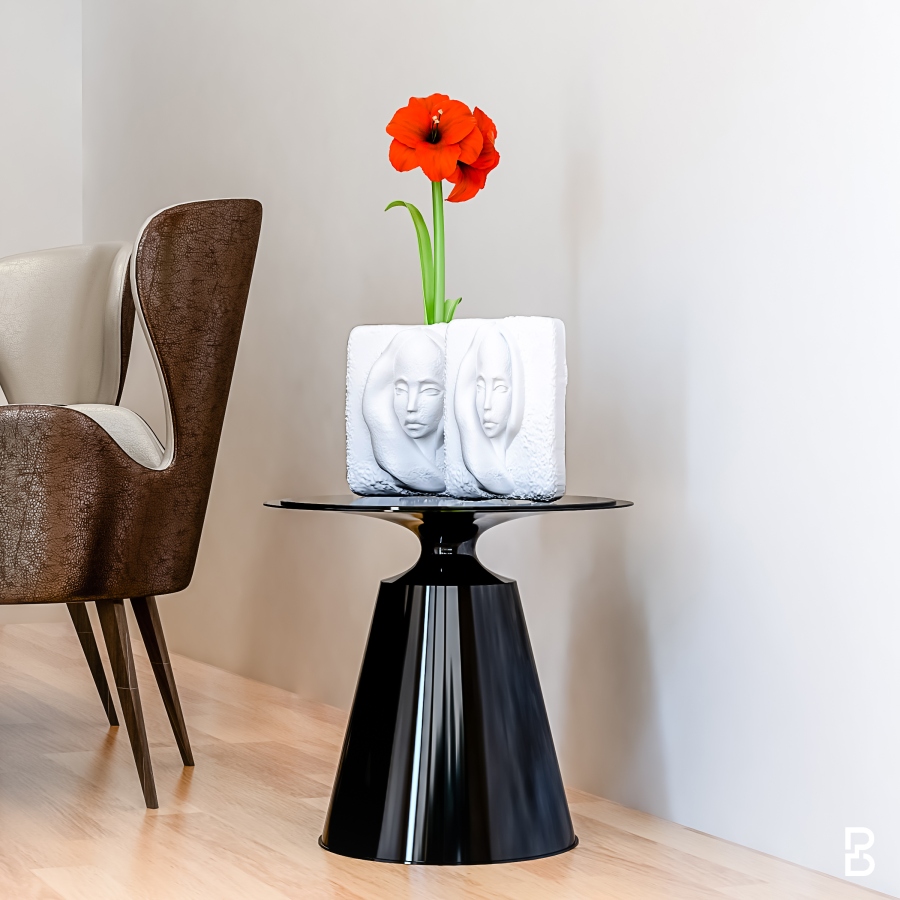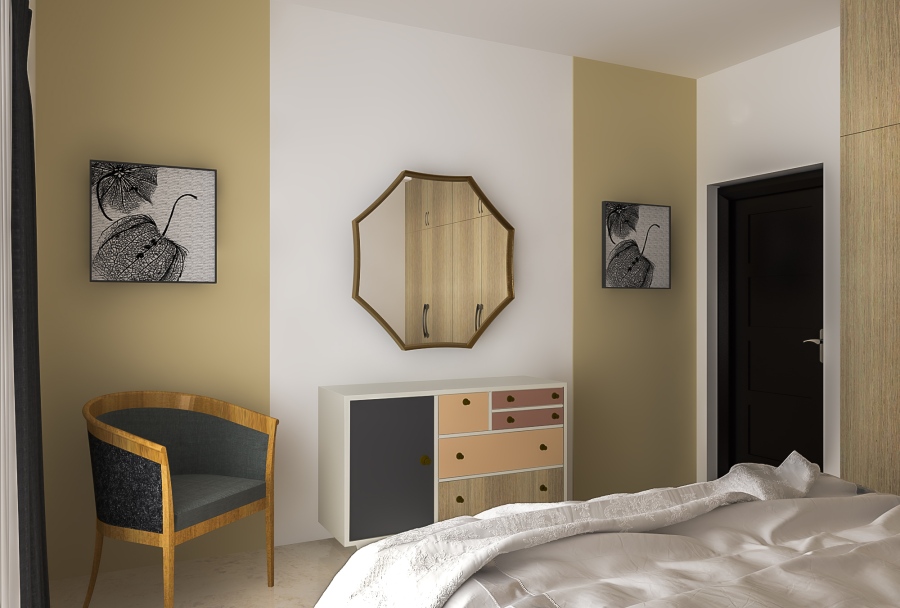The term Texture is quite commonly used among interior designers. It seems that it is one of the most crucial elements while the designers are planning to design your interiors. Of course, when you think of recreating your interiors yourself, you might think of changing the wall colours, the furniture, or the upholstery. But when a professional does the same task, they also make necessary changes in the texture to bring comparatively bigger changes in the interiors. Thus, you must have understood by now the importance of texture in home interior design ideas.
What is Texture in Interior Design?
While most interior designers are talking about texture while designing the interiors, the question stands: What is this texture creating the buzz.
In simple words, the texture is anything that can create a physical presence in the room and bring a change to the interiors somehow. For example, it can be a furniture piece that makes the whole room look more royal than before. It can also be the carpets and the rugs that offer a much warmer feel to the room.
The texture does not just mean the physical items that are installed in the interior. It can also be the room’s lighting that can make a room have a warm and cozy environment than before. It can also be the paint on the wall that can make a dingy room appear more spacious now.

Thus, adding a texture requires a lot of knowledge about what can transform the interiors in what way. Any texture that is being added should not look too obvious and, at the same time, should be able to offer the transformation that the interiors require. This is why interior designing is said to be a combination of science and arts.
How to Use Texture in Interior Design?
Now when the concept of texture is clear, it will be much more convenient to understand how to use texture in interior design. Here are some of the ways how texture can be put to use in home interior design ideas.
Layering with Textures:
The best thing about textures is that you can use them alone and layer them up to create a richer theme. For example, if you think that just adding up heavy furniture in an empty room is making the furniture quite loud and obvious, you can start layering it up with other texture options. Several other texture options can be used for the purpose, such as woolen carpets on the floor starting beneath the furniture, a glass table, glazed ornaments, or other artworks on the walls or glass lamps by the side table, and many others.

When different texture options are available at different corners of the room, there is no particular attention towards any one element. This completely arrests the mind of the viewer in the whole layering of textures. The whole layering up thing does not just offer a rich but also a warmer look to the interiors.
Breaking the Monotony:
Textures can be used in a significant way in breaking the monotony in the room. It is quite evident that to maintain a theme; you might have chosen a similar color or pattern for the furniture, upholstery, and even the color of the walls of the room. This might seem perfect at the initial stage when you are enjoying a minimalistic look or so. But when a few months pass by, the same look may turn out to be monotonous. This is when you might require a few contrasting textures here and there to evoke spark in the interiors.

If you have similar coloured furniture, such as in light shades, you can add up some bright coloured or dark shaded cushions on the sofa set. For example, if you have a beige coloured seating set spread out in the whole living room, you can bring in colours like bright red or pastel greens for the cushions of the seating area.
Not just the colour, you can also make changes in the fabric of the texture to break this monotony. For example, you can use cotton rugs during the summers while you can change them into woolen ones during the winters. Similarly, you can choose the fabric of the cushion covers, curtains, and other items available in the room as per the weather condition and events happening.
Textured Furniture and Storage Units:
Furniture is the commonest texture that can be used to bring changes in the interiors of a room. For example, installing a heavy oak wood dining table in place of a marble table that existed below somehow brings a huge difference in the look and the environment of the whole room. Also, it is not always the bigger furniture options that bring such changes. There are times when smaller textures also bring massive changes to the room.

Installing wooden cabinets just under your granite countertops is one of the best examples to look up for. When a kitchen is transformed into a modular kitchen, the whole look of the kitchen changes. The kitchen now looks more elegant and get spacious as you have ample storage to hide items that remained scattered in the kitchen earlier. So, whether it is the furniture or the storage units, these textures definitely help in bringing a massive change in the look of the room.
Textured Accessories:
You are wrong if you think that only furniture or heavy items can be considered as textures that can offer transformation to an interior. The use of several textured accessories such as mirrors, statues, vases, and many others can also bring a sense of change and moderation.
Often interior designers make use of huge mirrors in places that are small and dingy. This is because mirrors reflect light and create an illusion of space and makes the small room appear much bigger than its usual size. This is the reason, most designers prefer to install huge mirrors on the wardrobe beside the beds in case of a smaller bedroom. Also, huge mirrors are installed in the washroom to make them appear spacious.

Apart from the mirrors, there are several other accessories such as vases, statues, potteries, and other items that are used as textures. But this does not mean that you can use any accessories that you get your hands on. You need to choose the right accessories so that the theme in the room is maintained using those textured accessories. Select a theme and then start arranging your textured accessories accordingly.
Plants and Flowers:
Plants and flowers, whether real or artificial, play an eminent role in transforming the look of the room. Installing some live greens in the balcony can bring the simple to-do balcony into life all of a sudden. Similarly, colourful flowers are always helpful in breaking the monotony of a place. If you have chosen to have white chair covers and white table covers for your dining area, you can make use of a vase filled with colourful flowers at the center of the table to break the white monotony.

Not just in terms of colour, the live plants can help in breaking the pattern of other senses too. Install palm trees with pebbles at their foot in your living room and you will see the change that you have. Most people have lavish TV units with the latest technologies available. The seating area and other elements in the living room are mostly in sync with the TV unit to keep it attractive. In such a scenario, adding live palm trees at the corners of the living room or at some sides breaks the monotony of high-end technology and offers a fresh feel to the area.
The Lighting:
The lighting of an interior is considered to be the most effective texture ever. The design and style of the source of light is already a texture that offers a specific look to the room. If you are planning to have a traditional interior theme, adding up lights in the form of traditional lamps helps a lot in getting that traditional look. Similarly, pendant lights hanging over the breakfast counter in an open kitchen also offers a sophisticated touch to the area.

Also, the quality of light from the source has another role to play as texture. Having a small reading light at one corner of the bedroom while the entire room is dark offers a warm and focused look. Similarly, a subtle coloured light in the living room on a summer evening brings out the perfect mood for some gossip with your friends over a glass of wine.
So, if you have been thinking that just adding a few furniture and decorations or painting the walls can make your interior stand out, there are so many things you are missing out on. One such element is the texture that is capable of transforming an interior in a massive way. This is one of the prime reasons why interior designers focus on textures very seriously while designing an interior.
Furniture and Storage:
Of course, there are many people who love the modern lightweight seating options, there are still people who love the comfort of traditional heavy sofas. A similar idea goes for the bed, dining table, and other furniture options of the Indian house too.
When it comes to storage, Indians need a good amount of storage to keep the house free from mess. Hence, big or small storage units can be noticed very commonly in almost every room and area of the house starting from the foyer area to the balconies of the house.

Apart from this, the use of traditional artifacts is something very common in any Indian household interior. It can be a painting or a statue or some wall hangings. Having these artifacts offer a touch of tradition and culture to the interiors. Also, the use of unique artistic decor makes the space look glamorous in its own way.
Conclusion:
Today, it is not very possible to judge an Indian house due to the implementation of modern decor, replacing the traditional approach. But as the saying says, you may change the outer layer, you cannot change the roots. There are some specific elements and features that you can always expect in an Indian-style home interior design and some of them are the ones discussed above.











